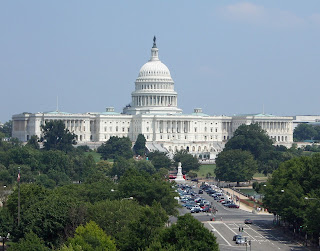The landscape of political representation in the United States has undergone a significant evolution over the years, particularly in terms of racial and gender diversity. As the nation strives to uphold its principles of democracy and equality, the call for a government that truly reflects the diverse tapestry of its population has grown louder. In this blog post, we will explore the historical context, challenges faced, progress made, and the ongoing efforts to achieve meaningful racial and gender diversity in political representation in America.
Historical Context
The roots of political representation in America can be traced back to the founding principles of the nation. However, for much of its history, political power was concentrated in the hands of a select few – predominantly white men. The 19th Amendment, passed in 1920, granted women the right to vote, marking a pivotal step towards gender equality in politics. The civil rights movement of the 1960s further spurred discussions about racial equality, leading to landmark legislation such as the Voting Rights Act of 1965.
Challenges Faced
Despite these milestones, the path to achieving meaningful racial and gender diversity in political representation has been marred by persistent challenges. Structural barriers such as gerrymandering, voter suppression, and lack of access to political resources have disproportionately affected marginalized communities. Discriminatory practices, both overt and subtle, have hindered the progress of individuals from underrepresented backgrounds, perpetuating the dominance of white males in political offices.
Progress Made
Nonetheless, there have been remarkable instances of progress that underscore the changing face of American politics. The election of Barack Obama as the 44th President of the United States in 2008 was a watershed moment, signifying the potential for individuals of color to reach the highest echelons of power. Similarly, the increasing number of women elected to Congress, state legislatures, and local offices has demonstrated a growing acceptance of gender diversity in politics.
Ongoing Efforts
Efforts to promote racial and gender diversity in political representation have taken various forms. Grassroots organizations, advocacy groups, and community leaders have mobilized to raise awareness about the importance of diverse voices in government. Initiatives aimed at increasing voter registration and education in marginalized communities have sought to address historical disparities. Additionally, political parties and institutions have begun to implement measures like diversity quotas and inclusive candidate recruitment strategies.
Benefits of Diversity
The push for greater diversity in political representation is not merely about meeting a quota; it is rooted in the belief that a diverse government leads to more effective and inclusive policies. When elected officials reflect the demographics of their constituents, they are better equipped to understand and address the unique challenges faced by different communities. Diverse perspectives contribute to more comprehensive policy debates and innovative solutions that benefit the entire nation.
Challenges on the Horizon
While progress has been made, challenges persist. The intersectionality of identities – where race, gender, ethnicity, and other factors converge – adds complexity to the pursuit of diversity. Women of color, for instance, often face double barriers and unique forms of discrimination. Additionally, tokenism remains a concern, where a few individuals from marginalized backgrounds are placed in prominent positions to create an illusion of diversity without substantial systemic change.
Encouraging Future Generations
Fostering diversity in political representation requires a concerted effort to inspire and empower future leaders from all walks of life. Educational programs that encourage civic engagement and leadership skills from an early age can lay the foundation for a more inclusive political landscape. Mentorship and support networks for underrepresented individuals interested in pursuing a career in politics can provide guidance and opportunities to overcome the challenges they might encounter.
The journey towards achieving meaningful racial and gender diversity in political representation in America is an ongoing struggle, but one that holds immense promise. As the nation continues to grapple with its historical legacy of exclusion, the collective efforts of individuals, organizations, and institutions are slowly reshaping the face of politics. By addressing systemic barriers, promoting inclusivity, and recognizing the inherent value of diverse perspectives, the United States can move closer to a government that truly represents all its citizens. Through this transformation, America can inch closer to the ideals of democracy, equality, and justice that it so passionately upholds.


No comments:
Post a Comment